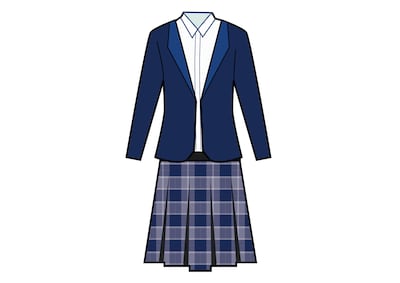Whether it’s piercings, haircuts, uniforms, leaving the school grounds during lunch break, the manner in which to address teachers, or even when a child is allowed to use the toilet, all schools will have a set of rules that they expect students attending to follow.

But how many of them make sense in a modern society that is supposed to embrace difference? And how many are just rules for the sake of rules?
Perhaps we’re just afraid of the anarchy that might follow if some of the more arbitrary rules were to be reconsidered. Or maybe those rules will stand children in good stead for the future. But for the students who are expected to blindly follow them, perhaps the time has come for a broader conversation to discuss whether certain school rules should stay or whether they need to go.
In 2022 students Josie Flanagan and Shahed Al Moubayed won the prestigious UCD Young Philosophers award in their year group category. In their project, An bhfuil cead agam dul go dtí an leithreas?, the two third-year students at St Brendan’s Community School in Birr, Co Offaly, looked at the concept of school rules.
Ireland and Trump’s tariffs: From pharma to booze – how will our prices, jobs and economy be hit?
Irish Times readers pick Claire Keegan’s Small Things Like These as the best Irish book of the 21st century
Trocadero restaurant review: A timeless classic that is old-school in the best sense
Nathan Johns: How will the Lions attack against Australia?
Shahed believes school rules are necessary, but that all rules should serve a very definite purpose rather than being “just for the sake of controlling students”.
“In my opinion uniforms are good because they provide some sense of community for the students,” she says. “Everyone is wearing the same thing. You’re not comparing yourself to someone else and what they’re wearing.”
However, not all uniform rules make sense, she says. “In our uniform policy you can’t wear a black shoe with a white bottom. I don’t really understand why we can’t do that. And jacket-wise, you can’t wear a jacket unless it has the school logo on it”. Again Shahed can’t see any particular reason for this.
While some schools may have strict rules around hairstyles, Josie, who has blue hair, explains that St Brendan’s allows a degree of expression. “There is a lot of freedom when it comes to our uniform policy. I’m allowed to wear my hair however I like. I’m allowed to have piercings. There are certain rules around facial piercings – we’re not allowed to have them. You can see it’s a bit more arbitrary – it doesn’t make sense. But when it comes to being allowed to express ourselves, and I think with my hair how I present myself, there’s no backlash.”
Josie thinks facial piercings “should be allowed. It’s an expression of yourself” – though she concedes that some sort of safety concerns may be behind this rule.
Both Josie and Shahed would like to see the school explain the purpose of some of the rules to the students, and to see discussions happen between students, parents and teachers. “I think if the rules were explained people would be willing to follow them more,” Shahed says.
At St Brendan’s students are expected to call teachers Sir, Miss, or by Mr or Miss and their surname. Josie says she’s happy to address teachers by their preferred title. “There’s the bond between a teacher and student, but there’s also the respect level and the seniority of a teacher as opposed to a student. You have to be respectful. But at the same time it can be seen as a little bit silly if they call you by your first name and you don’t call them their first name. Maybe it is a bit arbitrary and a bit of an odd rule to have.”
Shahed says that “as a student I don’t mind calling them whatever they would like. I think it’s out of respect and that the teacher is older than you, and in charge and responsible for you and everyone in the class.”

The girls’ school uniform doesn’t include skirts, and both girls welcome the flexibility around uniform. Josie points out the comfort aspect of being able to wear trousers for sport and playing or for girls when they have their period. But Kate Liffey, who is a teacher at St Brendan’s, cautions that not everybody was in favour of the removal of skirts from the uniform.
“I have a counselling role in the school and there are girls in the school who feel it would be good to have the option of a skirt,” says Kate. “The school introduced a non-gender specific uniform out of respect for trans students, and to allow for students to feel ‘we’re all the same. We’re going about our business.’ Boys and girls can wear the same uniform.
“For me it’s all about that piece that Shahed and Josie are talking about, flexibility. But there would be some girls in the school who would have come to me and said they’d like to have had the option of a skirt.”
When it comes to school rules, Kate says, “for me as a teacher and as a parent it’s about the human being behind the rule. For example, if the child is five minutes late for school in the morning they don’t automatically have a strike or get detention because you look at their circumstances and you say, ‘well maybe that child has had to get themselves up. Maybe that child is coming from a background where they’re not supported to go to school’.”
Kate also thinks rules cannot be rigid and need to be adaptable for neurodiverse children. “Having an expectation for a child with ADHD (attention deficit hyperactivity disorder) to sit in a class for an hour, with minimal, if any, movement break . . . that child is going to need to get up. That might be, ‘I need to go to the bathroom’. ASD (Autism spectrum disorder) children are maybe slightly more supported. But for children with ADHD, codes of behaviour need to be looked at because they don’t necessarily have the context.”
Kate, who is involved in developing the school’s code of behaviour, says “it’s important to talk about the importance of allowing creativity and individuality when building a code of behaviour. I think the philosophical underpinnings of this kind of stuff is I think schools really need to be helped to engage with the big questions as opposed to just the nitty gritty of ‘thou shalt not’, or ‘thou shalt’.”
It’s not just students, however, who struggle to understand the point of some school rules. Parents and teachers from other schools also shared their frustration with rules that appear to make no sense.
Cara feels strict rules around school lunches can create issues around food. “No treats demonises fun food, which creates binge tendencies,” she says.
And she wasn’t alone in thinking this. “School lunches in primary school having to be this and that. I just want my child to eat!” said Emma.
Teacher Amy says she doesn’t understand rules around “facial piercings. It doesn’t affect my ability to teach them, so I don’t see why we must pick that battle.”
While Teresa can’t understand the rules around haircuts at her son’s school. “Boys are not allowed to have their hair cut too short or too tight.”
Lisa takes issue with “bloody hair colours. Why does me having unnatural hair colours affect anything?”
And Laura questions the need to have “any ban on cool haircuts or nail varnish”.
Rules around uniforms were a bone of contention for several parents.
Tracey can’t understand why her child’s school requires “expensive school coats for secondary school that kids hate and refuse to wear”.
Ann wondered why her daughter’s school ruled that “girls have to wear a tie”.
While Ciara questioned the need for “uncomfortable uniforms. Some schools have only sports style uniforms. Would love that,” she added.
School rules may not be there to be broken, but perhaps it’s time to challenge the ones that make least sense.
- Find The Irish Times on WhatsApp and stay up to date















